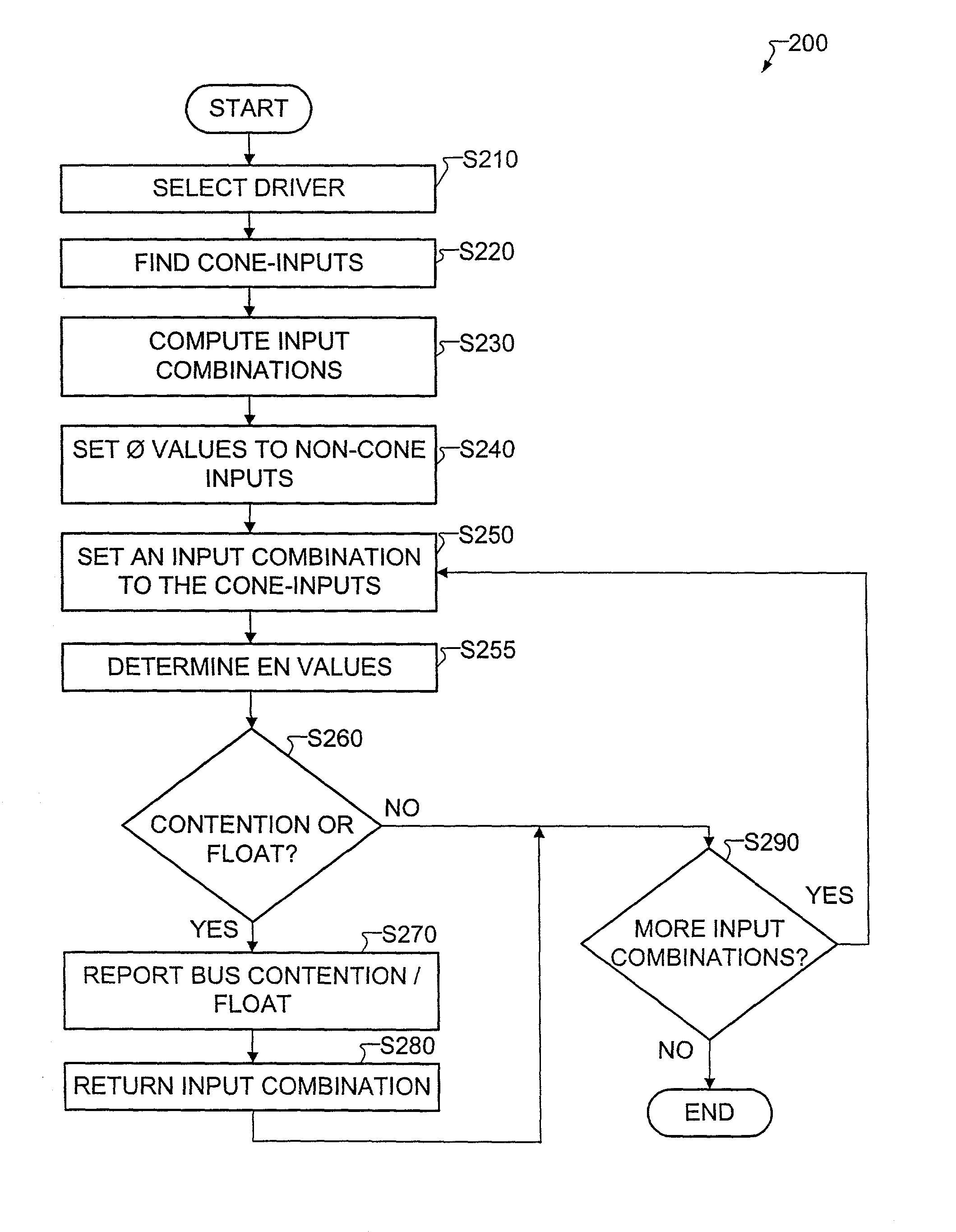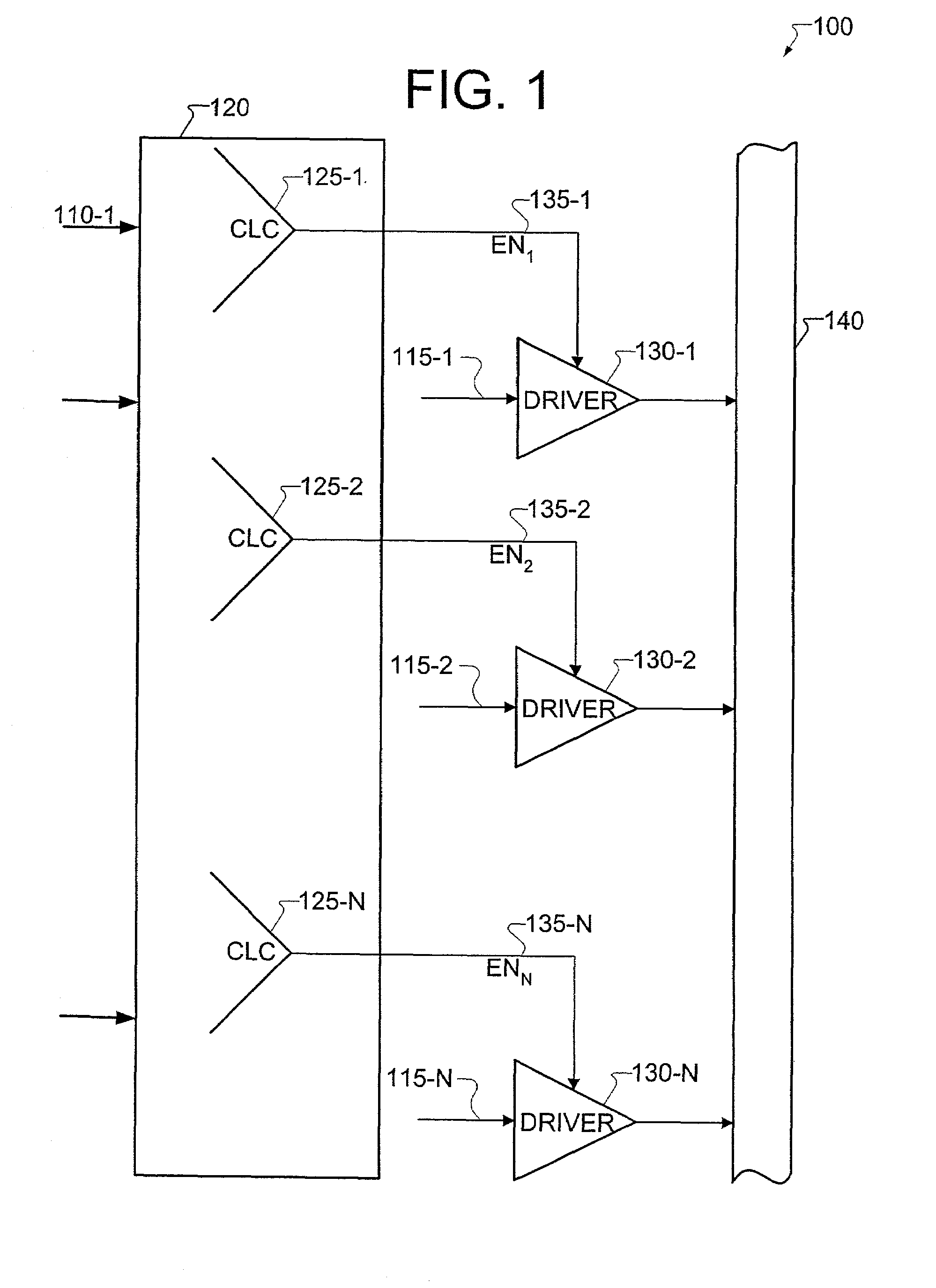Method for detecting bus contention from RTL description
a technology of rtl description and bus contention, applied in the direction of coding, instruments, code conversion, etc., can solve the problems of difficult to relate a gate level problem back to the original rtl code, inability to find in the rtl the precise cause of a gate level violation, and inability to introduce design errors during the design
- Summary
- Abstract
- Description
- Claims
- Application Information
AI Technical Summary
Problems solved by technology
Method used
Image
Examples
embodiments
[0040]The invention, in one aspect, provides a method for efficiently identifying contention and / or float conditions on buses used in integrated circuits (IC). A bus is an electrical conductor capable of receiving signals from a plurality of sources connected to the bus. Each of these sources includes an enable condition that, when active, allows a particular source to drive data onto the bus. When two or more sources propagate data onto the bus simultaneously, a contention occurs. The method provided simulates input combinations and detects whether there is a possibility of a bus contention. The method is further capable of detecting the case where none of the sources is driving the bus. This is referred to as a bus float. In addition, the method provided is targeted for design for test (DFT) circuits, therefore using this method allows the designer to identify from the RTL description a contention that may occur only in test. The method also provides the designer with the data con...
PUM
 Login to View More
Login to View More Abstract
Description
Claims
Application Information
 Login to View More
Login to View More - R&D
- Intellectual Property
- Life Sciences
- Materials
- Tech Scout
- Unparalleled Data Quality
- Higher Quality Content
- 60% Fewer Hallucinations
Browse by: Latest US Patents, China's latest patents, Technical Efficacy Thesaurus, Application Domain, Technology Topic, Popular Technical Reports.
© 2025 PatSnap. All rights reserved.Legal|Privacy policy|Modern Slavery Act Transparency Statement|Sitemap|About US| Contact US: help@patsnap.com



